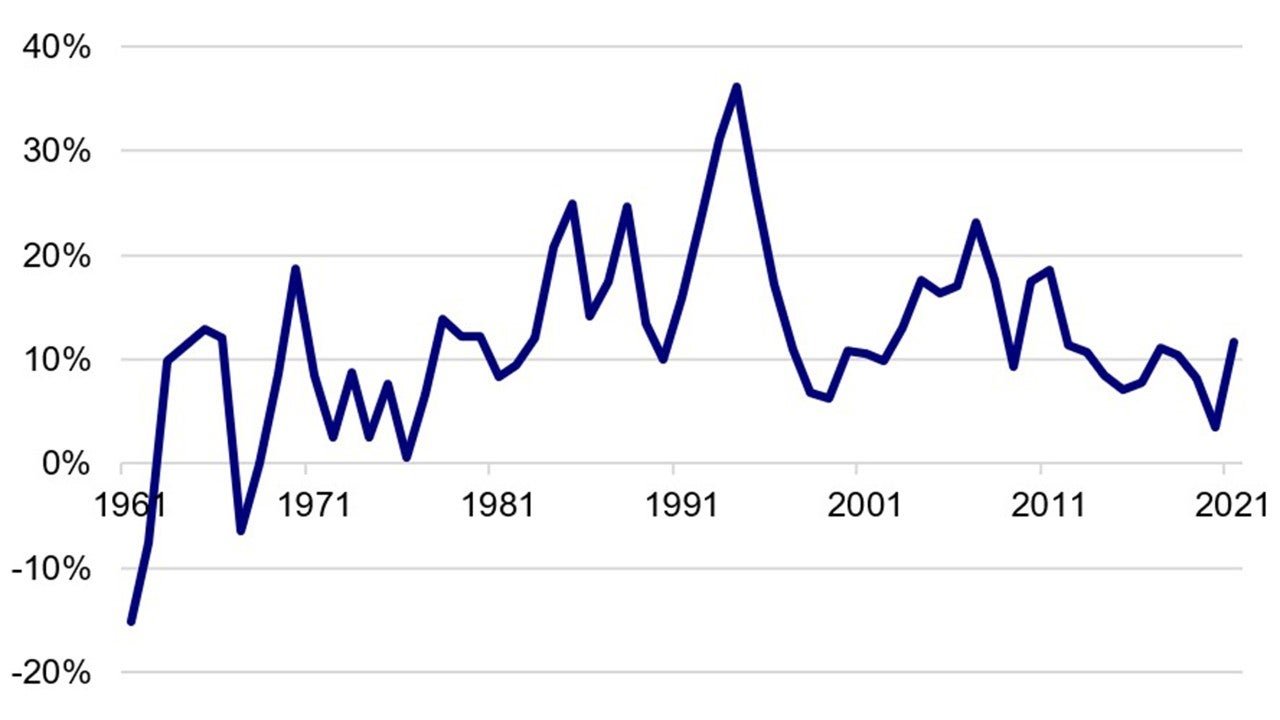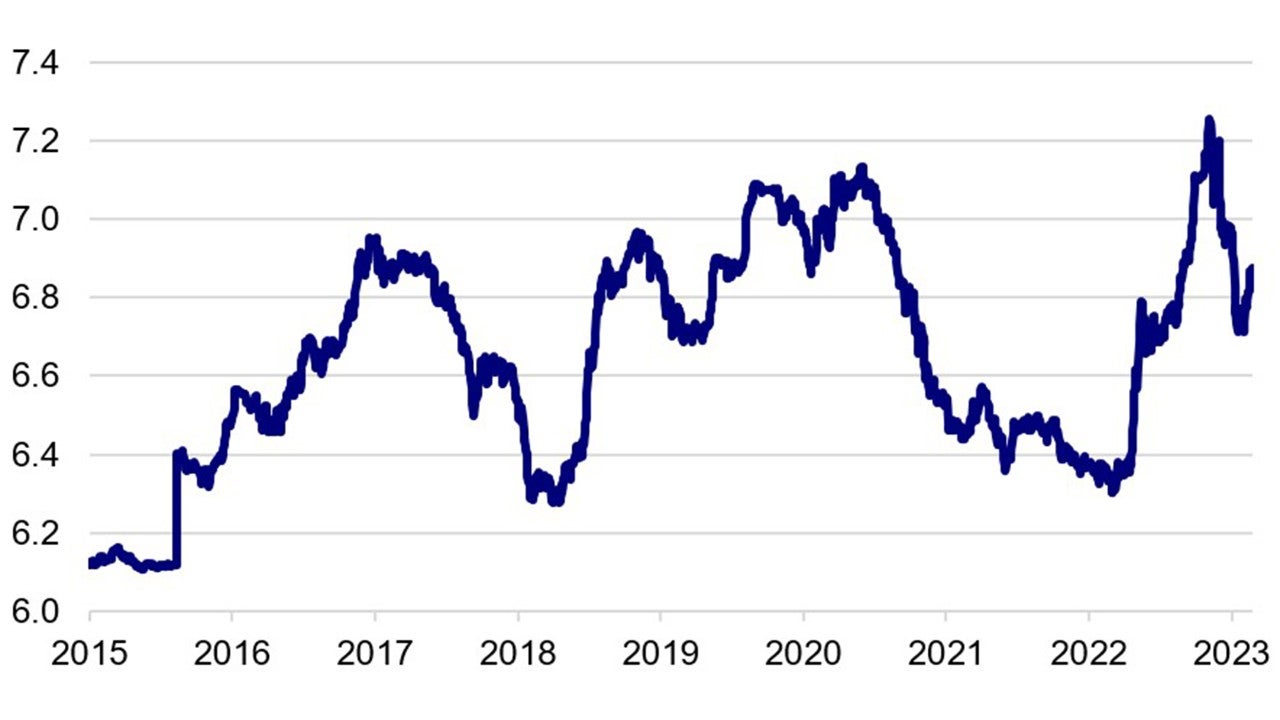Emerging or developed market? China’s economic uniqueness defies labels

- Never has an emerging market been so influential in the global economy; the scale of China’s markets demands its own analysis framework
- To grasp the next stage of China’s development, investors must take it for what it is – nearly the world’s largest economy and one of its largest and most diverse markets
China’s prospect after reopening
In the last Year of the Rabbit in 2011, China officially leapt over Japan to claim the mantle of the world’s second-largest economy. Can China jump again, out of the emerging-markets rabbit hole to achieve the coveted developed-market status?
Indeed, the end of Covid-19 controls in China is unleashing a wave of economic activity that should reignite growth for the entire globe.
At the World Economic Forum in Davos last month, Chinese Vice-Premier Liu He said: “China’s national reality dictates that opening up to the world is a must, not an expediency. We must open up wider and make it work better.”
It “matters tremendously”, said International Monetary Fund managing director Kristalina Georgieva, also at Davos, as China’s successful economic reopening “is very likely the single most important factor for global growth in 2023”.
There is little doubt China’s reopening is a boon for the global economy. While Chinese economic growth has moderated in recent years, it is still expected to remain significantly stronger than that of developed countries.

Source: China National Bureau of Statistics (NBS). Data as of 2021.
Concerns about regulatory risk, which contributed to a serious downturn in China market sentiment from late 2020, has largely abated. The goals of “common prosperity” - aligned regulations have come into sharper focus: better risk management in financial services companies, stronger data protection, avoiding big tech monopolies, improving worker conditions and, of course, combating climate change.
The objective of common prosperity was never to drive out foreign investors or undermine the market economy. It is to ensure high-quality growth through China’s next stage of development.
A rethink of labeling China
So what is this next stage? China is already the world’s largest economy on a purchasing power parity basis and the second largest in nominal gross domestic product. It is poised to become the largest economy within this decade, although with population growth essentially over, the focus must turn to high-quality and sustainable growth through technological innovation and increasing productivity.
These efforts must continue so China can improve its per capita GDP, which at about US$12,000 remains well behind its global peers. Also, restrictions on capital account convertibility – the right of residents and non-residents to freely trade currencies and assets at will with each other – remain widespread.
These characteristics make China an emerging market in traditional economic analysis. But never has an emerging market been so influential in the global economy: China claims highly impressive superlatives, such as the world’s largest trading nation, second-largest bond market and second-largest national equity market.
The scale of China’s markets means its “emerging market” label is unhelpful in understanding its investment landscape, and index providers are struggling.
China appears dramatically underweight in global indices, yet dramatically overweight in emerging market indices. It accounts for about 10 per cent of global equity market capitalisation but less than 4 per cent of MSCI’s All Country World Index and the FTSE All-World Index. Conversely, China overwhelms emerging market benchmarks. At the end of last month, it made up 33.49 per cent of the MSCI Emerging Markets Index.
China’s economy and markets are now so large that there is a small but growing group of investors who approach China as a specific investment allocation, dedicating substantial analytical and investment resources.
Perhaps the best case for spinning China out from emerging markets is that it is so unique, it requires its own analysis framework.
Characteristics of emerging markets
Emerging markets have always been a heterogenous group, but they share crucial macroeconomic characteristics. Their economies are generally not as productive as in developed markets and per capita incomes are much lower. Their financial markets tend to have lower capitalisation with less liquidity and diversity of issuers in stocks or bonds.
They are also significantly driven by the global economic cycle, even those that run external trade surpluses, where the value of exports exceeds that of imports. So they tend to benefit when global growth is rising and the US dollar softening, but suffer when financial conditions tighten, global growth slows and the dollar strengthens.

Source: People's Bank of China (PBoC). Data as of 22 February 2023.
China is an exception to all these. Its market is increasingly driven by secular characteristics, due to its economic scale and diversity, and the depth and liquidity of its financial markets. China’s monetary policy tends to be countercyclical to that of other large economies, which drives different asset performance trends. These factors alone make Chinese assets an important portfolio diversifier.Policymakers are likely to set a GDP growth target of “around 5%” though we believe the economy could exceed estimates.
Most emerging markets are small, open economies highly exposed to the global economic cycle and US monetary policy. These days, the Chinese economy has become a critical factor in evaluating emerging market performance.
How should we consider China market after all?
China is still emerging, and we should remember that political and structural considerations are just as important factors in considering developed-market status. South Korea, after all, remains an emerging market according to MSCI classifications, despite lifting restrictions on won trading hours and removing stock registration rules to address this. China’s unique political system complicates its emerging vs developed market labelling.
In our post-Covid world, static labels from a different investing era are perhaps no longer as helpful. It’s more accurate to take China for what it is – nearly the world’s largest economy and among its largest, deepest, most liquid and diverse financial markets.
Equally, we should take emerging markets for what they are – a wide range of countries and sub-asset classes that deserve focus on their own merits, rather than a sideshow rounding error in indices increasingly dominated by China.
A version of this article appeared in South China Morning Post on 15 February 2023.
当資料ご利用上のご注意
当資料は情報提供を目的として、インベスコ・アセット・マネジメント株式会社(以下、「当社」)のグループに属する運用プロフェッショナルが英文で作成したものであり、法令に基づく開示書類でも金融商品取引契約の締結の勧誘資料でもありません。内容には正確を期していますが、必ずしも完全性を当社が保証するものではありません。また、当資料は信頼できる情報に基づいて作成されたものですが、その情報の確実性あるいは完結性を表明するものではありません。当資料に記載されている内容は既に変更されている場合があり、また、予告なく変更される場合があります。当資料には将来の市場の見通し等に関する記述が含まれている場合がありますが、それらは資料作成時における作成者の見解であり、将来の動向や成果を保証するものではありません。また、当資料に示す見解は、インベスコの他の運用チームの見解と異なる場合があります。過去のパフォーマンスや動向は将来の収益や成果を保証するものではありません。当社の事前の承認なく、当資料の一部または全部を使用、複製、転用、配布等することを禁じます。
IM2023-026
そのほかの投資関連情報はこちらをご覧ください。https://www.invesco.com/jp/ja/institutional/insights.html

